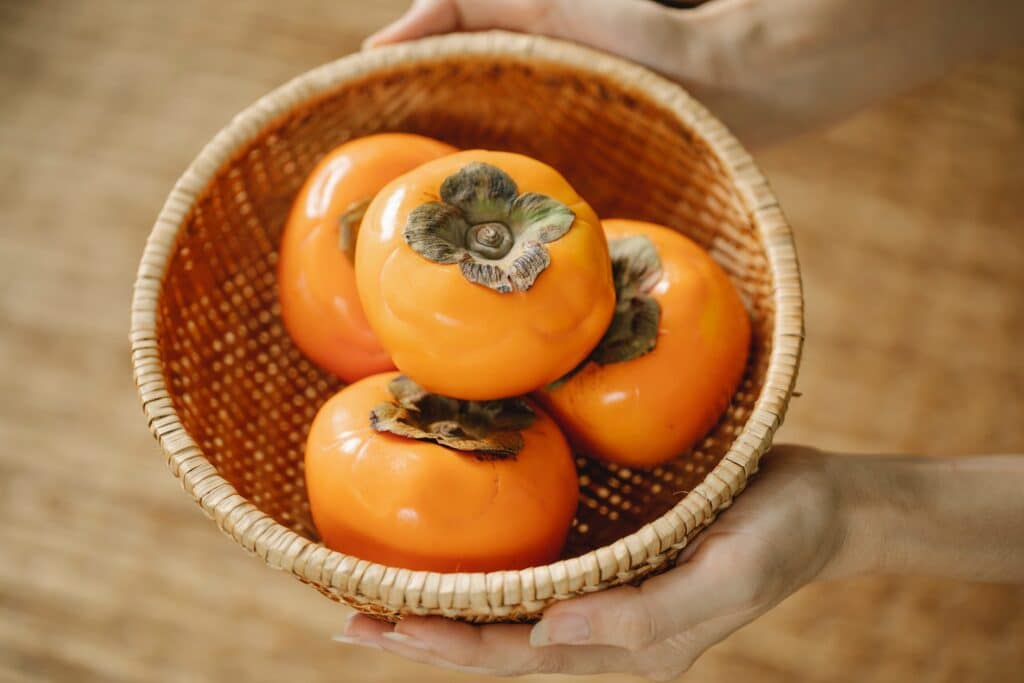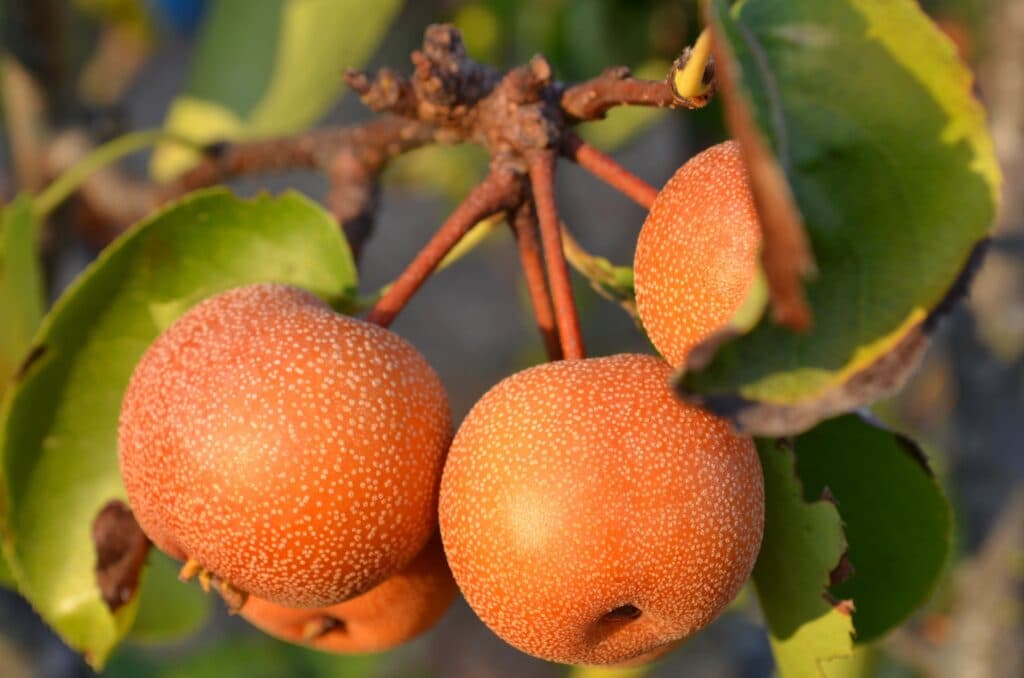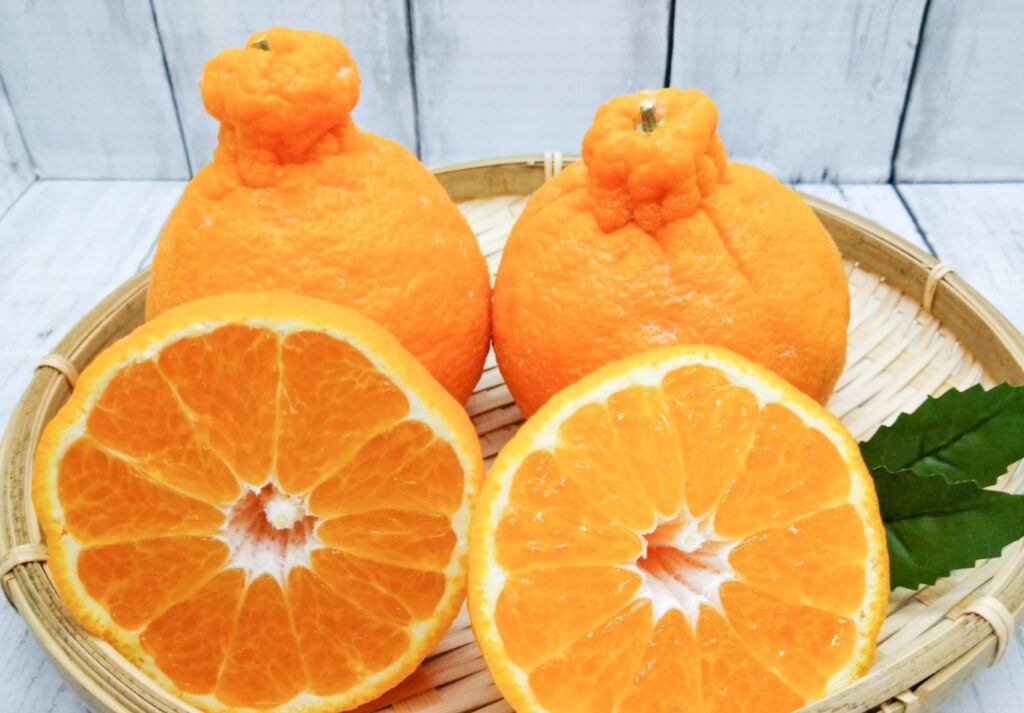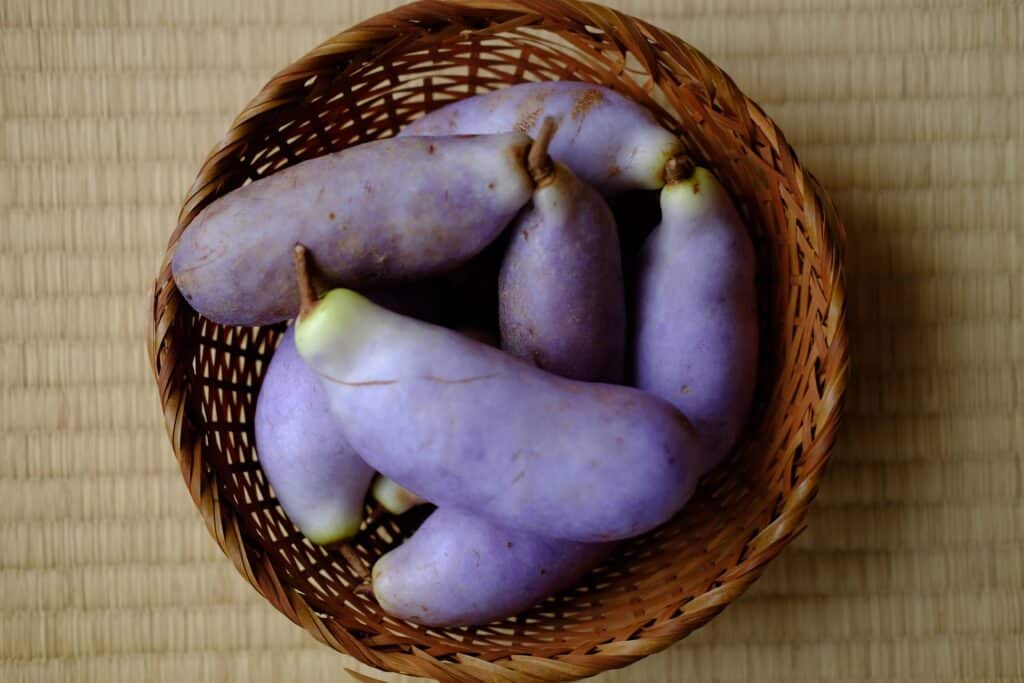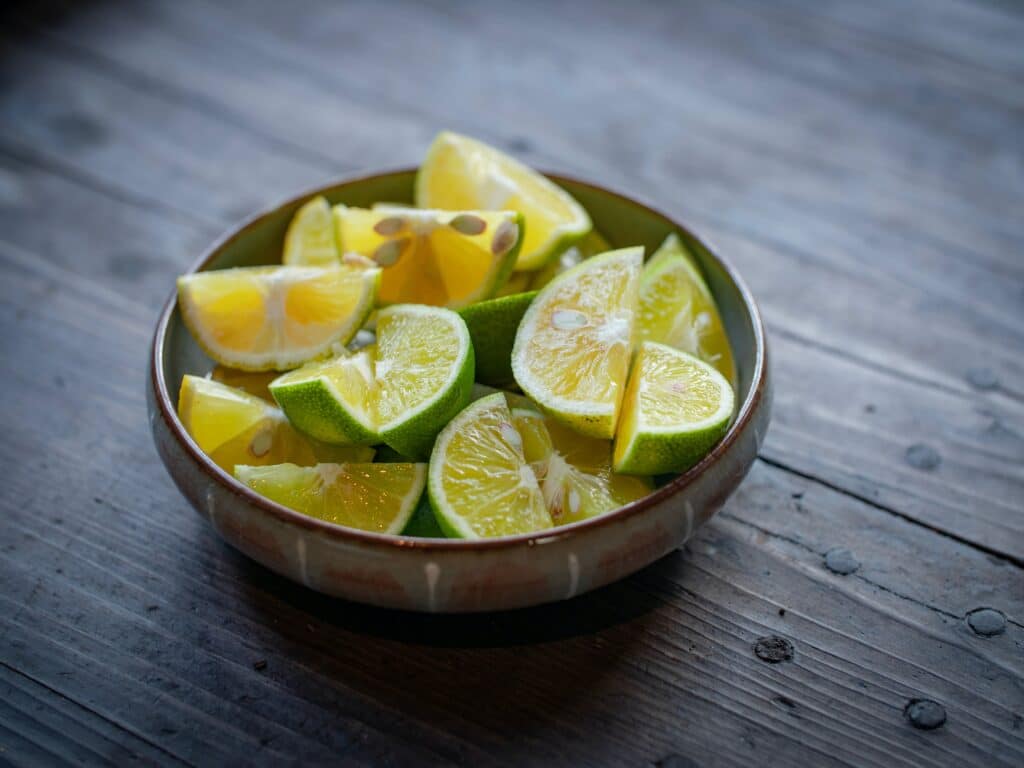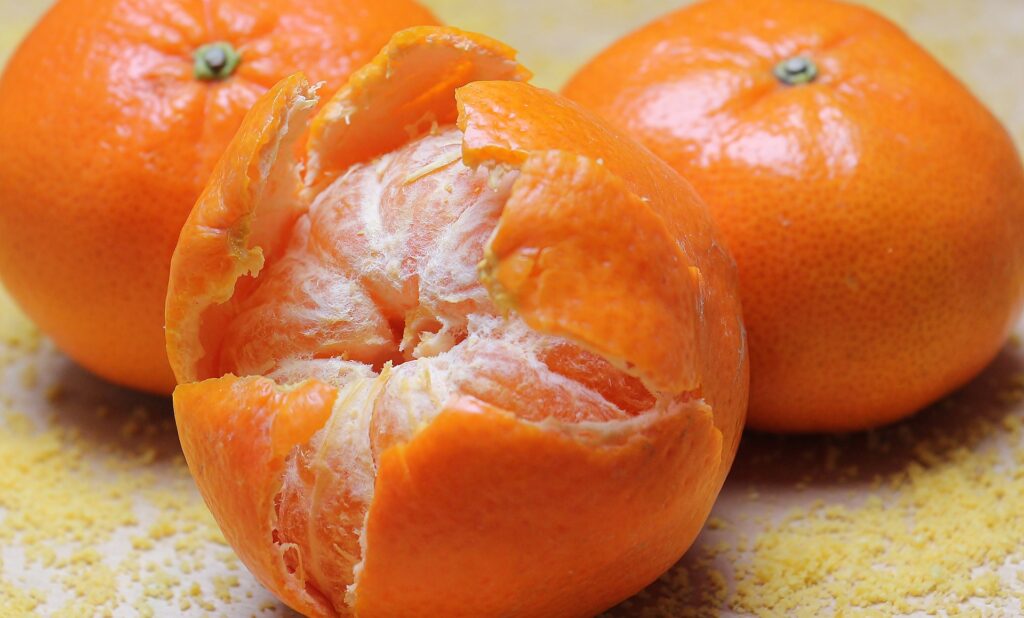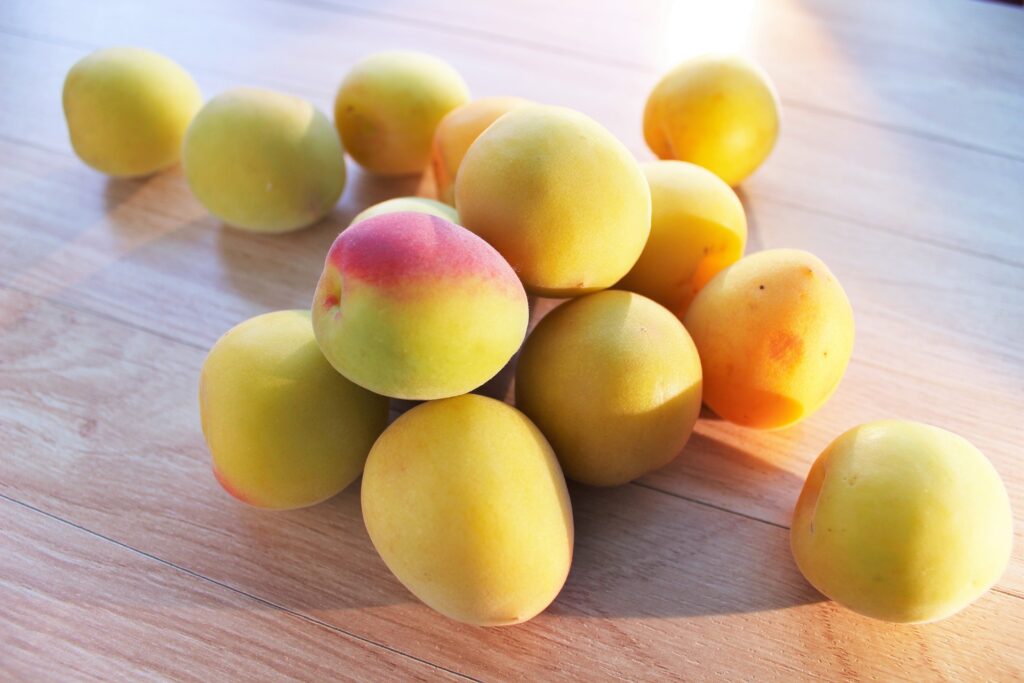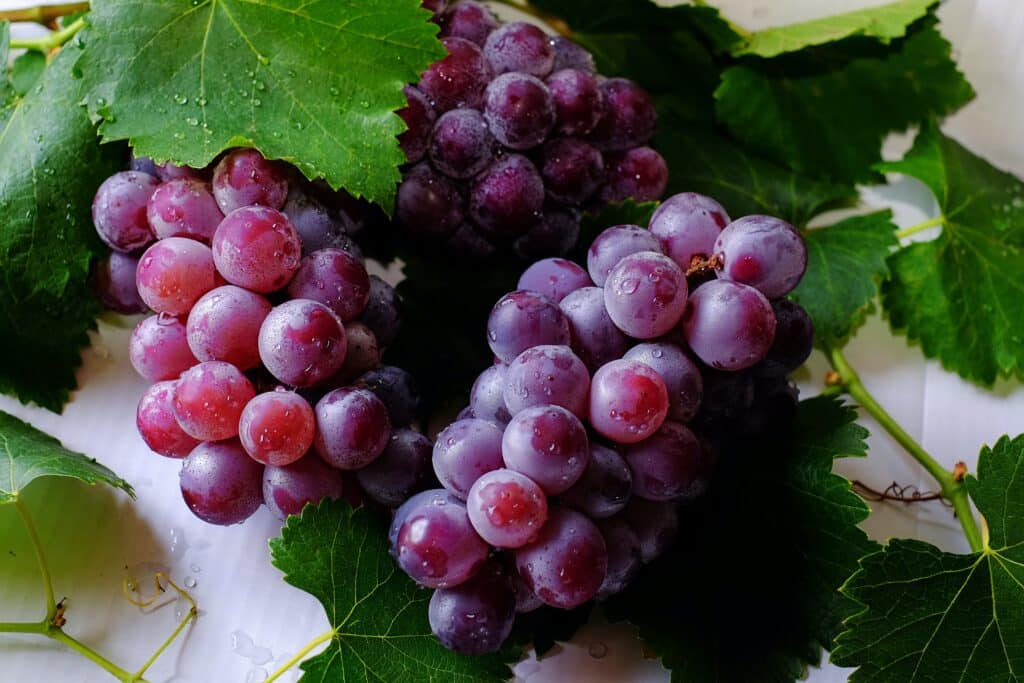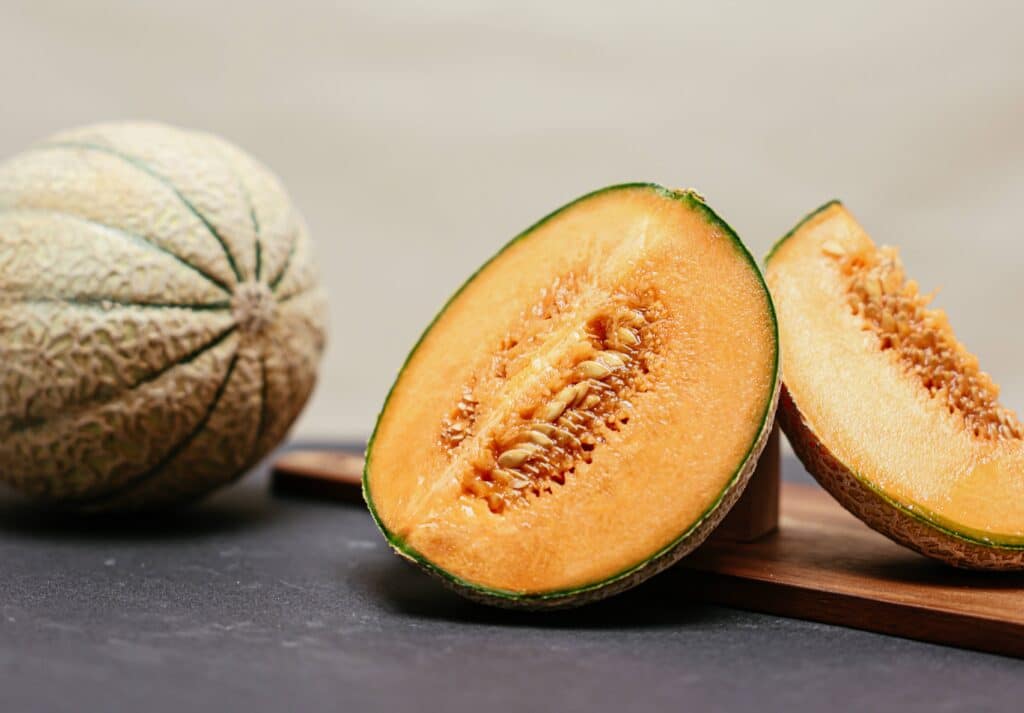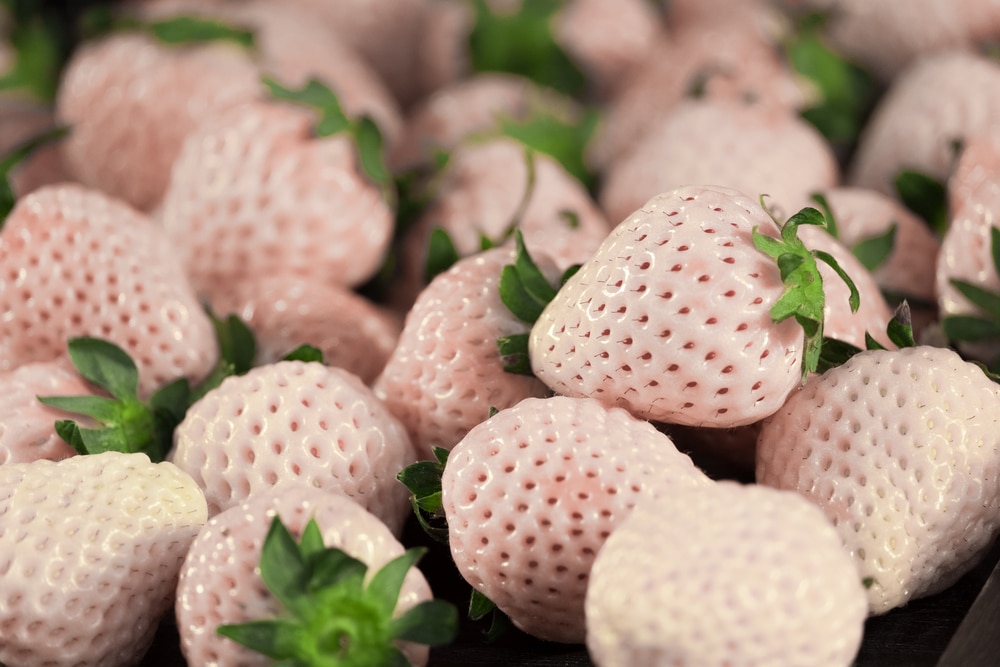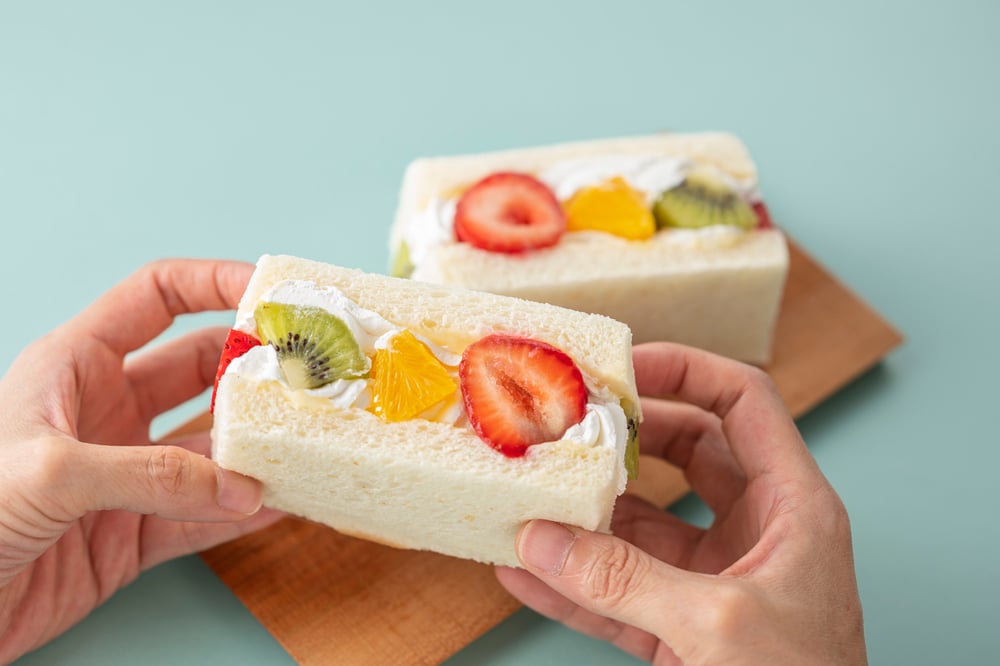
30 Fruits in Japanese, From Classics to Uniquely Japanese
Fruits ( くだもの ) play a big role in Japanese cuisine, and Japan is home to some very interesting fruits that are hard to find elsewhere.
Let’s go over the Japanese names of very popular fruits, plus introduce you to some unique produce that’s especially loved by Japanese natives.
Contents
Download: This blog post is available as a convenient and portable PDF that you can take anywhere. Click here to get a copy. (Download)
Common Fruit Names in Japanese
As you go through the list, you’ll see that the names of Japanese fruits can be written using hiragana, katakana or kanji. Remember that katakana is mainly used for foreign words—in this case, fruits that weren’t originally native to Japan.
While the kanji for each fruit is good to know, don’t worry too much about it! You’ll encounter fruit names more often in hiragana or katakana.
りんご — Apple
Katakana: リンゴ
Kanji: 林檎
あんず — Apricot
Katakana: アンズ
Kanji: 杏
バナナ — Banana
ブルーベリー — Blueberry
さくらんぼ — Cherry
Katakana: サクランボ
Kanji: 桜桃 or 桜ん坊
You may also say チェリー .
ココナッツ — Coconut
ぶどう — Grape
Katakana: ブドウ
Kanji: 葡萄
キウイ — Kiwi
レモン — Lemon
Kanji: 檸檬
びわ — Loquat
Katakana: ビワ
Kanji: 枇杷
マンゴー — Mango
メロン — Melon
オレンジ — Orange
もも — Peach
Katakana: モモ
Kanji: 桃
なし — Pear
Katakana: ナシ
Kanji: 梨
かき — Persimmon
Katakana: カキ
Kanji: 柿
パイナップル — Pineapple
きいちご — Raspberry
Katakana: キイチゴ
Kanji: 木苺
Another word for raspberry is ラズベリー .
いちご — Strawberry
Katakana: イチゴ
Kanji: 苺
すいか — Watermelon
Katakana: スイカ
Kanji: 西瓜
These are some of the most common fruits in Japan, so you’re bound to hear about them a lot if you keep learning Japanese.
To remember these fruit names more quickly, you’ll need two important strategies: flashcards and context. For instance, you can look up any of these fruit names on FluentU’s dictionary and turn them into multimedia flashcards with a click—audio, graphics and example videos and sentences included.
FluentU takes authentic videos—like music videos, movie trailers, news and inspiring talks—and turns them into personalized language learning lessons.
You can try FluentU for free for 2 weeks. Check out the website or download the iOS app or Android app.
P.S. Click here to take advantage of our current sale! (Expires at the end of this month.)

Of course, for the full sensory experience, remember these Japanese words and maybe even say them out loud the next time you bite into these fruits.
Unique Fruits from Japan
Here comes the fun part—let’s go over a few of the special fruits that are well-known by Japanese natives but may be completely new to you!
Most of these do have native Japanese names and assigned kanji characters, but again, I recommend that you focus first on the hiragana and katakana spellings.
ふゆうがき — Fuyu Persimmon
Kanji: 富有柿
Did you know that the persimmon is Japan’s national fruit? And for good reason too: There are a variety of different Japanese-bred persimmons, and all of them are delicious.
The Fuyu persimmon is one of the most popular. It’s a “non-astringent” type that’s small and firm with a surprisingly spice-like flavor. I’d rank it as my favorite persimmon—not just because it’s so yummy, but also because you can eat it whole, like an apple.
なし — Japanese Nashi Pear
Katakana: ナシ
Kanji: 梨
なし is the general term for a pear, but regular pears in Japan are quite different from what you may be familiar with. The nashi pear is round with a yellowish to brownish skin, and it’s wonderfully crunchy, juicy and refreshing.
Although I love my Western Bartlett and Bosch pears, sometimes a nashi pear just does a better (and sweeter) job at quenching thirst!
デコポン — Dekopon Citrus
Oranges are a big deal in Japan, and the dekopon citrus is one specimen grown on Japanese soil that’s gaining traction in other countries too. It’s aptly known as “sumo mandarin” because its shape resembles a sumo wrestler’s head and portly belly.
Dekopon citrus might look odd, but it’s absolutely delicious. I personally like oranges that are “face-wrinkling sour,” but I greatly appreciate how the dekopon balances tartness with a bright sweetness.
あけび — Akebi
Katakana: アケビ
Kanji: 木通
I’ve never eaten the akebi fruit, but I already love it for how weird it is. Known also as “chocolate vine fruit,” it has vivid purple skin that reminds me of a Japanese sweet potato, but its white, seed-flecked pulp vaguely brings to mind a dragonfruit.
The taste is said to be rather mild, but all parts of the fruit can be eaten in different ways—for example, the skin is commonly fried.
すだち — Sudachi
Katakana: スダチ
Kanji: 酢橘
The sudachi is a green citrus fruit that is predictably sour, but also slightly savory. For this reason, it’s used like a lemon or lime. Its zest and juice can be sprinkled atop a variety of dishes, such as salads or noodles.
I normally use lemon juice when I need a bit more punch to my veggie bowls, but I think I may try out a sudachi next time.
うんしゅうみかん — Unshiu (Satsuma) Mandarin
Katakana: ウンシュウミカン
Kanji: 温州蜜柑
The Satsuma mandarin is actually one of the citruses that were cross-bred to create the dekopon citrus. It tastes delicious, but unfortunately, it’s rather difficult to find fresh in markets outside of Japan.
What I love the most about this fruit is that it doesn’t take a lot of effort to eat—the peel slips off like paper, and there are no seeds to spit out.
うめ — Ume
Katakana: ウメ
Kanji: 梅
The Japanese plum known as ume has a distinct explosive sourness so potent that the fruit usually isn’t eaten raw. It’s typically fermented or pickled into umeboshi, but let me tell you, even that doesn’t really put a dent in its tartness.
I’ve experienced the fascinating tang of ume in different foods, from riceballs to wine, and all I can say is that it’s not a fruit for the weak. Don’t let that stop you from trying it, though!
きょほうぶどう — Kyoho Grapes
Kanji: 巨峰葡萄
Western grapes are known for being mildly sour, and they’re firm enough that they pop in your mouth when chewed. Kyoho grapes are quite different—they’re very sweet with little to no sourness, and their delicate skins slip off easily.
They aren’t the cheapest fruits around, but because they’re just that good, I always make sure to get a few boxes of them during the summer and early fall.
ゆうばりメロン — Yubari Melon
Kanji: 夕張メロン
Also known as “Yubari king” melon, this fruit is said to be the best-tasting cantaloupe in Japan, and consequently, the most expensive fruit in the world (with a price that can reach up to five million yen). They are only grown in the Yubari region located in Hokkaido, so they’re very exclusive.
They’re one of the well-known “gift fruits,” and are packaged expensively—sometimes in a wooden box with beautiful wrapping paper & ribbons.
I love cantaloupes dearly, but I’ve accepted the fact that I probably won’t be graced too often by the royal presence of this esteemed melon.
はつこいのかおり — “Scent of First Love” Strawberry
Kanji: 初恋の香り
Naturally, the fragrance of burgeoning love would be associated with the very romantic strawberry. This dainty fruit was bred to be pale pink to nearly white, but its taste isn’t much different from a regular strawberry’s.
It’s considered an expensive luxury fruit that you can buy as a gift for your special someone. I probably wouldn’t be able to afford a box of these myself, but I’d certainly love to be on the receiving end and eat a few.
If your hunger to learn has been sated, why not satisfy your actual hunger as well?
Take a trip to a Japanese market and pick up some of the fruits mentioned here! They’ll likely have labels with their Japanese names, so practice reading those as well.
And One More Thing...
If you love learning Japanese with authentic materials, then I should also tell you more about FluentU.
FluentU naturally and gradually eases you into learning Japanese language and culture. You'll learn real Japanese as it's spoken in real life.
FluentU has a broad range of contemporary videos as you'll see below:

FluentU makes these native Japanese videos approachable through interactive transcripts. Tap on any word to look it up instantly.

All definitions have multiple examples, and they're written for Japanese learners like you. Tap to add words you'd like to review to a vocab list.

And FluentU has a learn mode which turns every video into a language learning lesson. You can always swipe left or right to see more examples.

The best part? FluentU keeps track of your vocabulary, and gives you extra practice with difficult words. It'll even remind you when it’s time to review what you’ve learned. You'll have a 100% personalized experience.
Start using the FluentU website on your computer or tablet or, better yet, download the FluentU app from the iTunes or Google Play store. Click here to take advantage of our current sale! (Expires at the end of this month.)
